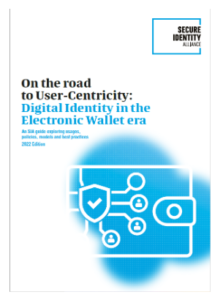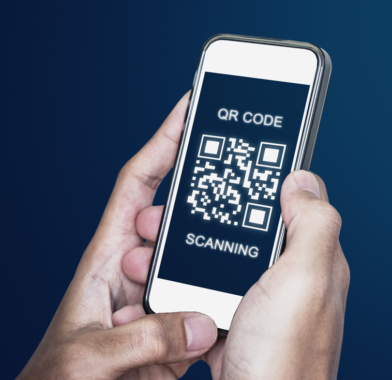
As a key member of the Secure Identity Alliance (SIA) and chair and contributor of the Digital Identity workgroup, we are delighted to share with you a copy of the newly published whitepaper from the SIA ‘On the Road to User-Centricity: Digital ID in the E-Wallet Era’.
The paper provides a detailed overview of digital identity and the use cases driving wallet adoption, key architecture trends, standards and data models that will need to be considered when implementing e-wallets. We’re happy to have worked with the SIA on this important report – and in this blog we’ll give you an insight into what the full report covers.
The evolution of digital ID wallets
Mobile devices are quickly becoming a default option for users looking to interface with digital or in-presence services – a trend accelerated by the Covid-19 pandemic.
Cloud adoption, in conjunction with the mobile environment, has allowed for a wide and varied combination of data management practices and a simplified user experience. It’s because of this we’ve seen a growth in use of mobile-based digital ID – whether it’s for payments, KYC, transport, health or other services.
User-centricity and interoperability
The report highlights the need for governments, retailers and other service providers to pay close attention to how they adapt current digital ID systems when integrating e-wallets for citizen and consumer use. Added to this, managing ID and data on cloud infrastructures and mobile phones means new security, sovereignty and privacy issues will need to be addressed. But that’s not all.
Interoperability and standards in digital identity are rising in importance in both public and private ID schemes. Around the globe, government administrations are already working with businesses to initiate ecosystems featuring e-ID cards, PKI, biometrics and digital ID wallets that will simplify how citizens interact with trusted e-services. The aim is to provide a one-stop and workable digital approach that encompasses identity, security and trust services.
Similarly, governments are now looking beyond national digital identity programs and are in pursuit of ways to enable convenient cross-border interoperability with other countries; whether that’s digitalizing passports so that passengers can enjoy seamless travel everywhere or enabling the cross-border recognition of immunisation and vaccine certificates. For example, in the EU, and as discussed in a previous post, work has begun in earnest on a European Digital ID framework that will enable citizens to prove their identity and share electronic documents held in their European Digital ID wallets using a mobile-based digital ID.
However, when it comes to e-wallets, end-users will expect to encounter intelligent security mechanisms – like biometry, AI, silent authentication and passive liveness detection – and user controls that make it possible to experience trusted, fluid and personalized identity, payment and health services without compromising their digital identities or privacy. Plus, they want to be able to use their mobile-based digital ID in the physical world – be that proving they have a driving license so they can hire a car, or demonstrating they meet age-restricted entry requirements at a physical venue.
In summary, as digital ID and e-wallets play an increasingly central role in enabling identification, authentication and authorization in the physical/digital worlds, requirements like interoperability (for multiple parties) user-centric ergonomics (personalized and streamlined trust services) and global security (including privacy) are becoming must haves.
Data models and new international standards for digital ID
The rise of e-wallets and digital ID is also stimulating the emergence of new international standards, protocols and data models including ISO 18013, ICAO DTC, Verifiable Credentials and DIDS which stakeholders will need to keep in mind when planning their digital ID programs.
While centralized data models continue to develop in many parts of the world, more and more hybrid models are emerging where centralized models (in the public sector) interface with federated models (in the private sector/on the Internet) and sometimes with decentralized models that allow users to directly manage their digital identity using a distributed architecture.
Stakeholders will need to evaluate the strengths and benefits of all these architectures to consider carefully which data transfer and data model standards they adopt if they wish to ensure interoperability with foundational identity management systems and achieve alignment between public and private sector digital ID ecosystems.
The growing technical complexity of the digital identity value chain means national governments should also look to build technical governance and conformity frameworks that assure a link between the technical and policy decision levels.
To discover more about key strategic and tactical challenges commercial and government organizations will need to navigate if they wish to future-proof their programs, ensure data privacy, wide adoption and interoperability, download the Digital ID in the E-Wallet Era report published by the Secure Identity Alliance here.
For further reading on Digital ID please check out the following:



